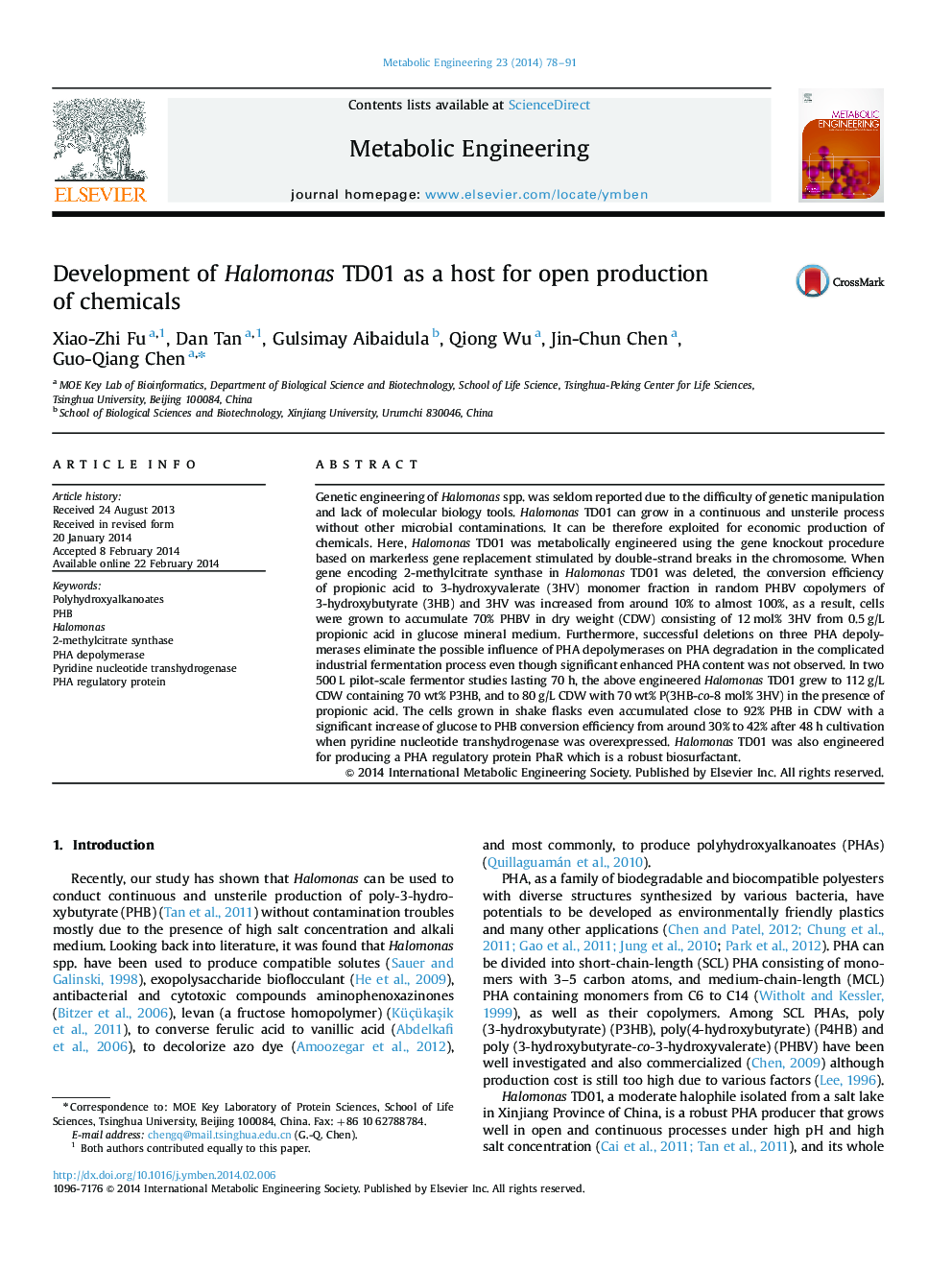| Article ID | Journal | Published Year | Pages | File Type |
|---|---|---|---|---|
| 31539 | Metabolic Engineering | 2014 | 14 Pages |
•Halomonas sp. can now be genetically manipulated.•Engineered Halomonas sp. produced PHB, PHBV and protein PhaR more effectively.•Engineered Halomonas sp. is a platform for reduced fresh water and energy consumption.
Genetic engineering of Halomonas spp. was seldom reported due to the difficulty of genetic manipulation and lack of molecular biology tools. Halomonas TD01 can grow in a continuous and unsterile process without other microbial contaminations. It can be therefore exploited for economic production of chemicals. Here, Halomonas TD01 was metabolically engineered using the gene knockout procedure based on markerless gene replacement stimulated by double-strand breaks in the chromosome. When gene encoding 2-methylcitrate synthase in Halomonas TD01 was deleted, the conversion efficiency of propionic acid to 3-hydroxyvalerate (3HV) monomer fraction in random PHBV copolymers of 3-hydroxybutyrate (3HB) and 3HV was increased from around 10% to almost 100%, as a result, cells were grown to accumulate 70% PHBV in dry weight (CDW) consisting of 12 mol% 3HV from 0.5 g/L propionic acid in glucose mineral medium. Furthermore, successful deletions on three PHA depolymerases eliminate the possible influence of PHA depolymerases on PHA degradation in the complicated industrial fermentation process even though significant enhanced PHA content was not observed. In two 500 L pilot-scale fermentor studies lasting 70 h, the above engineered Halomonas TD01 grew to 112 g/L CDW containing 70 wt% P3HB, and to 80 g/L CDW with 70 wt% P(3HB-co-8 mol% 3HV) in the presence of propionic acid. The cells grown in shake flasks even accumulated close to 92% PHB in CDW with a significant increase of glucose to PHB conversion efficiency from around 30% to 42% after 48 h cultivation when pyridine nucleotide transhydrogenase was overexpressed. Halomonas TD01 was also engineered for producing a PHA regulatory protein PhaR which is a robust biosurfactant.
